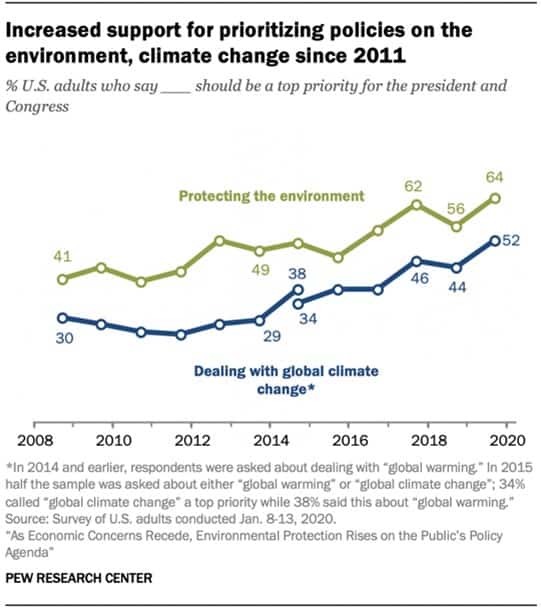Even after centuries of testing countless hypotheses and formulating new theories, we are still far from making scientific research the world’s default approach when confronting environmental issues. As burgeoning environmentalists, we need to ask ourselves these relevant questions:
- Is data on the issue available?
- Is data accessible?
- Is data digestible to the lay audience?
A “yes” response to each of these questions is the first step when advocating for environmental awareness.
Is data available?
In most situations, yes. When it comes to monitoring air quality, the US Environmental Protection Agency (EPA) (the lead government agency tasked to protect human health and safeguard the natural environment) collects data from more than 4000 air quality monitoring stations scattered across the United States. These stations serve as the backbone of air pollutant monitoring in the country and provide the government with relevant information on the current state of air quality and any trends that the general population needs to be aware of. The data captured by these monitors are curated, validated, and interpreted by competent experts to inform government policy decisions and raise environmental awareness. Despite these organized efforts, however, we still cannot say with confidence that most individuals are aware of air quality concerns.
Is data accessible?
While data gathering is an important aspect of environmental awareness, making sure that the data is accessible to individuals is just as critical. As with our first question, in answering this question, we have examples of government agencies currently making strides to bring about a resounding “Yes.” In this day and age, digital information infrastructures handling vast arrays of data are increasingly relevant, so much so that the government is planning to allocate billions of dollars to support national chip research and manufacturing (a key component to data gathering). Making environmental data available to as wide an audience as possible necessitates the use of multiple media platforms. The EPA maintains a host of webpages that present environmental data for the public to use for research to stay informed of the current state of the environment. The following are only a few examples:
Apart from its website, the EPA also posts relevant environmental information on various social media platforms. However, access to these resources remains an issue for some, especially those residing in rural areas. According to a recent survey by the Pew Research Center, roughly 23% of adults in the United States do not have access to residentual broadband. When nearly a quarter of the adult population lacks decent internet connectivity, the use of traditional media platforms (radio, broadcast, and cable television) to promote environmental issues remains a relevant practice, though not an overall solution.
Is data digestible to the lay audience?
Even with an abundance of data and a robust information infrastructure, relatable science communication is a necessary piece to ensuring environmental data is useful to those who need it most. Effective science communication is a critical component in garnering support for environmental causes. Government agencies can (and do) provide much of the data to support this effort, but if we don’t understand or trust the accuracy of the information, this data will be rendered meaningless.
Presenting environmental issues through a more local lens creates a sense of familiarity and fosters trust between the audience and the messenger. According to a 2019 Gallup study, Americans tend to trust local news sources more than national news outlets. In the United States, support for environmental causes is steadily increasing.

According to the Pew Research Center, 64% of US adults in 2020 want the government to prioritize policies that protect the environment. Numerous environmental issues have taken center stage in the public sphere due to the almost constant news headlines of natural calamities happening across the country and around the world. Creating effective science communication does not mean presenting facts about environmental issues and then advocating for a certain viewpoint, but empowering people to make their own, well-informed decisions. This strategy involves honing critical thinking and decision-making skills to contribute solutions to environmental problems.
Enhancing environmental awareness requires more intentional components than simply compiling data. We must equip more of the public—the ones who will benefit from the information the most—with the means to access the necessary data. Lastly, crafting communication of scientific data that is intelligible and relevant to the individual is essential for garnering support of environmental reforms. Available, accessible, digestible—for information of environment protections to be valuable, it must be all these three things.
Author Bio
The SafetyStratus Research Advisory Group (RAG) brings together thought leaders from the global environmental, health, and safety community to promote best practices and provide key insights in the profession and the industries they serve. The Research Advisory Group also advocates, where practical, the intersection of and advances with the use of technology, such as the SafetyStratus enterprise EHS software platform. Group membership consists of representatives from across varied disciplines and market sectors as well as select members of the SafetyStratus team.
The primary objectives of the SafetyStratus RAG partnership are to:
- Build a strategic partnership between EHS practitioners and the SafetyStratus team.
- Provide engaging and practical content to the global EHS community.
- Provide discipline and market feedback specific to SafetyStratus products and services.
While the objectives of the RAG are varied, the primary public-facing outcome will be available through engaging and practical content found on the SafetyStratus resource pages. Various articles, papers, and other valuable resources will be produced and shared as part of an ongoing effort to cultivate a robust community. Ultimately, the SafetyStratus RAG will expand to have a broader reach and provide opportunities for more inclusion by all interested EHS professionals in a collaborative community environment.



